Omnichannel AI Showdown for Customer Engagement
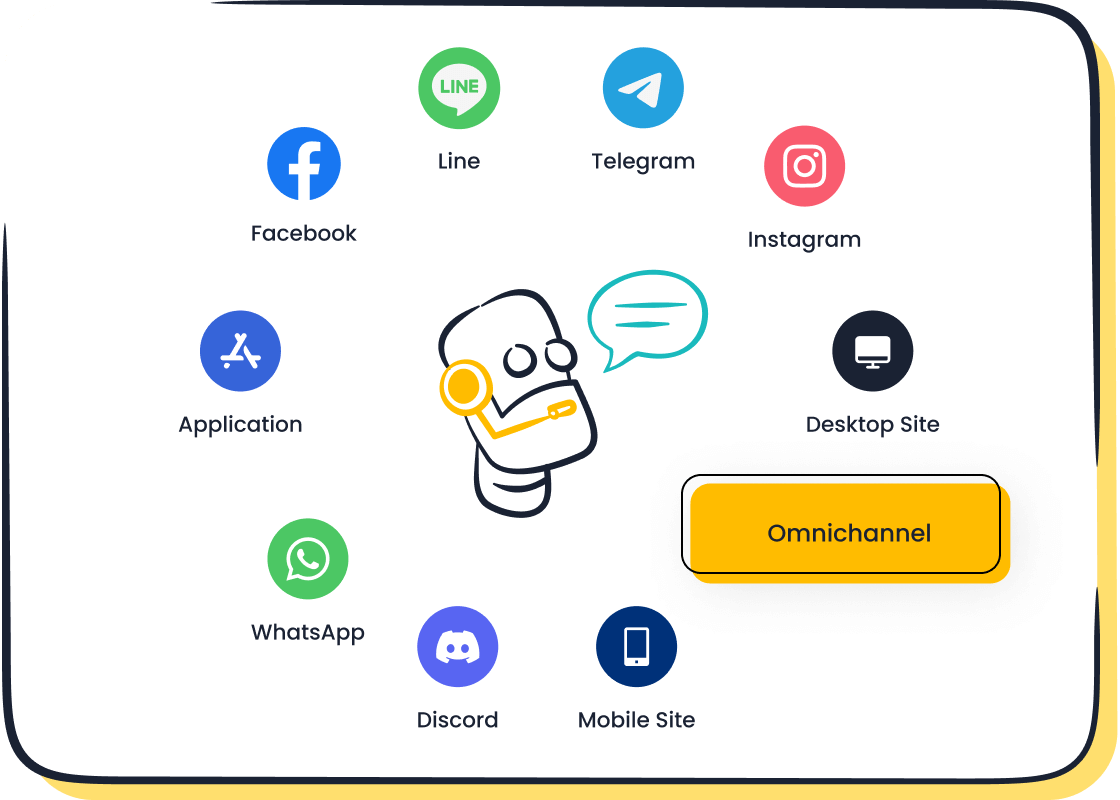
Omnichannel AI platforms lead customer engagement by delivering automation, personalization, and seamless integrations that drive measurable results. Businesses using omnichannel AI see a 287% increase in engagement and a 31% lift in conversion rates. 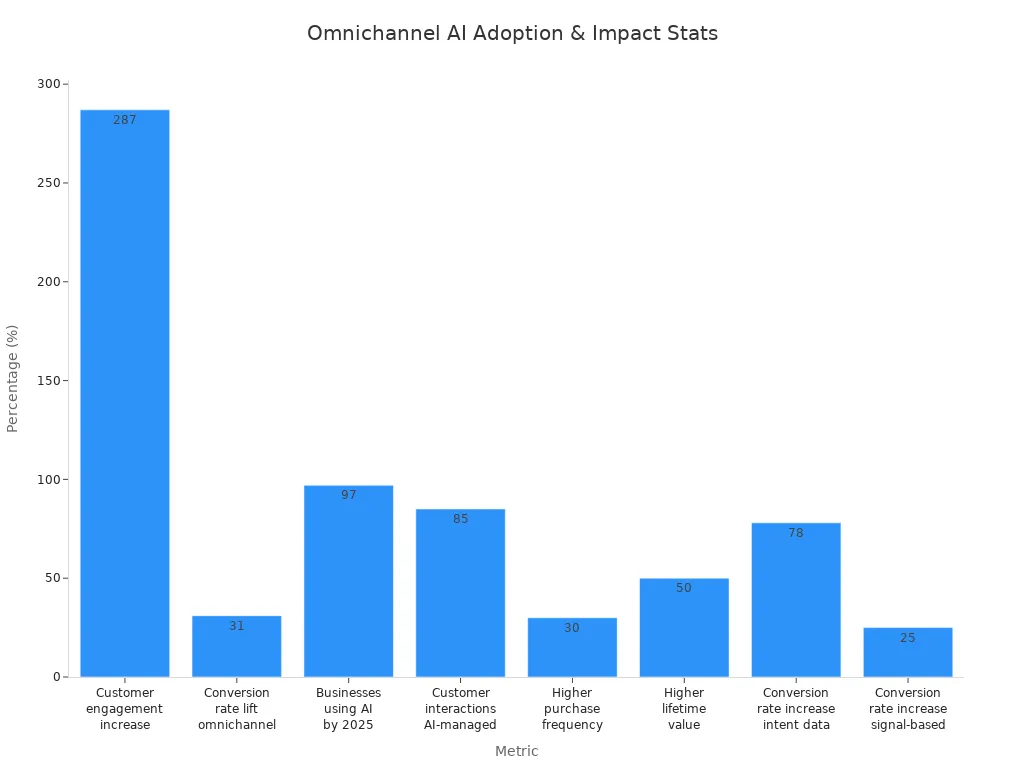 Strong omnichannel strategies help companies retain 89% of customers, showing the value of consistent, AI-powered engagement. Sobot, with its Sobot AI chatbot and Sobot call center solution, stands among the top platforms. Each organization should assess its unique needs when choosing an engagement platform.
Strong omnichannel strategies help companies retain 89% of customers, showing the value of consistent, AI-powered engagement. Sobot, with its Sobot AI chatbot and Sobot call center solution, stands among the top platforms. Each organization should assess its unique needs when choosing an engagement platform.
Omnichannel AI Basics

What Is Omnichannel AI?
Omnichannel AI brings together artificial intelligence and multiple communication channels to create a unified customer experience. Businesses use omnichannel AI to connect with customers through chat, voice, email, and social media, all managed in one system. This approach allows companies to deliver personalized customer engagement at every touchpoint, making each interaction feel seamless and relevant.
Industry analysts describe omnichannel AI as the integration of advanced AI technologies across all customer engagement channels. These technologies include chatbots, virtual assistants, predictive analytics, and real-time personalization. AI-powered tools analyze customer data, understand intent, and automate responses, ensuring that every customer journey is smooth and efficient.
Omnichannel AI enables companies to anticipate customer needs, resolve issues quickly, and maintain context across channels, resulting in a truly unified customer experience.
The core components and technologies that define omnichannel AI in customer engagement are summarized below:
| Technology / Component | Description | Impact / Benefits |
|---|---|---|
| AI-powered Chatbots & Virtual Assistants | Handle routine inquiries instantly; understand intent; provide dynamic responses | Reduced wait times; natural conversations; first-contact resolution |
| Omnichannel Integration | Unifies communication channels into a single connected experience | Eliminates repetition; improves agent efficiency; consistent customer experience |
| Real-time Personalization | Analyzes behavior and history to customize recommendations | Higher engagement; increased loyalty; relevant interactions |
| Enhanced Data Analytics | Uses real-time data and AI insights to understand behavior and anticipate needs | Proactive support; identifies pain points; improves agent performance |
| Balance of AI and Human Agents | AI handles routine tasks; humans focus on complex interactions | Optimized workflows; improved customer satisfaction |
Why Engagement Matters
Customer engagement drives business success. Companies that invest in personalized customer engagement see higher satisfaction, loyalty, and growth. Omnichannel AI makes it possible to deliver personalized experiences at scale, ensuring every customer feels valued.
Research shows a strong link between engagement and business performance. Engaged employees deliver better service, which leads to higher customer satisfaction and improved results. For example, a Gallup study found that top-performing teams in engagement achieved 10% higher customer ratings. Another study from Harvard Business Review confirmed that increased employee engagement leads to better customer service and satisfaction.
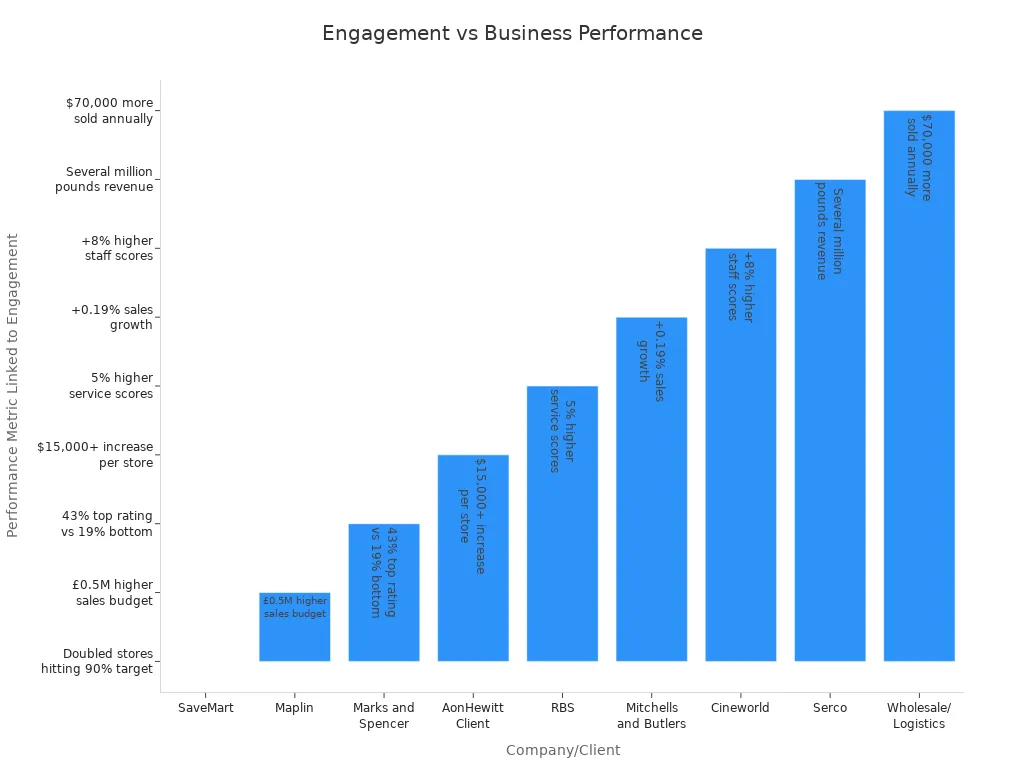
Personalized customer engagement creates memorable experiences and builds trust. Companies that use omnichannel AI can anticipate needs, offer proactive support, and deliver consistent messaging. This approach not only improves the customer journey but also boosts loyalty and long-term business growth.
Omnichannel Engagement Platforms
Sobot Overview
Sobot stands out in the landscape of omnichannel engagement platforms by offering a fully integrated, AI-powered omnichannel contact center solution. The company originated in Singapore and serves over 10,000 brands across industries such as retail, financial services, gaming, education, and enterprise services. Sobot’s mission focuses on enhancing customer interactions and improving operational efficiency through innovation and customer-centric design.
Sobot’s all-in-one platform brings together every customer channel—voice, live chat, email, social media, and messaging apps—into a single, unified workspace. This approach eliminates the need for multiple systems and ensures that customers receive consistent, personalized engagement at every touchpoint. The platform’s AI-first strategy, launched in 2024, features a comprehensive Five-AI system:
- Omnichannel AI: Connects all communication channels for seamless customer journeys.
- Scenario-based AI: Tailors engagement for specific industries, especially e-commerce and retail.
- Multi-faceted AI: Includes AI Agent, Copilot, and Insight for advanced automation and analytics.
- Generative AI: Leverages leading large language models (OpenAI, Amazon Bedrock, Anthropic Claude, DeepSeek) for intelligent responses.
- Secure AI: Prioritizes data privacy and compliance, meeting global standards.

Sobot’s AI Chatbot plays a central role in automating customer engagement. It operates 24/7, handles regular queries, and assists agents, improving productivity by up to 70%. The chatbot supports multiple languages and requires no coding for setup, making it accessible for businesses of all sizes. It also boosts conversions by 20% through proactive messaging and real-time intent assistance. The platform provides over 300 statistical reports with thousands of indicators, giving businesses deep insights into customer engagement and operational performance.
Sobot’s omnichannel contact center solution integrates with popular systems like Amazon, Walmart, Shopify, and Salesforce, offering flexible API support for custom workflows. The platform’s competitive pricing, often half or less than that of competitors, makes it accessible for both large enterprises and startups. Sobot’s human-centered philosophy ensures an experience-led, easy-to-use, and efficiency-driven platform, supported by a dedicated team available at every stage of the customer journey.
Sobot’s unified approach to omnichannel customer service empowers businesses to deliver personalized customer engagement, drive loyalty, and achieve measurable growth.
For more details, visit Sobot’s official website.
Other Leading Platforms
The market for omnichannel engagement platforms includes a range of solutions designed to help businesses manage customer interactions, automate workflows, and deliver personalized engagement across channels. These platforms support customer service, support, and contact centers, each with unique features and strengths.
Below is a comparison of widely used customer engagement platforms in the customer service and support sectors:
| Platform | Key Features | Advantages | User Preferences / Notes |
|---|---|---|---|
| Kustomer | Unified omnichannel communication (email, chat, social media, SMS, phone), AI-powered automation, unified agent workspace, robust reporting and analytics, open API and integrations | Centralized workspace for agents, AI-driven workflows, scalable for enterprises, customizable integrations | Preferred for user-friendliness, real-time notifications, and deep customer insights |
| Freshdesk | Cloud-based help desk with omnichannel support, advanced automation, diverse data visualizations | Suitable for smaller teams, end-to-end customer support management | Recognized for ease of use and comprehensive channel coverage |
| JivoChat | Live chat, social media and messenger integration, AI chatbots, proactive chat invitations, multiple integrations | Streamlines communication, improves response times, detailed analytics, secure data management | Valued for simple installation, visitor identification, and mobile accessibility |
Many omnichannel engagement platforms focus on delivering seamless customer experiences by integrating multiple communication channels. For example, UseInsider specializes in personalized, cross-channel marketing campaigns, using AI-powered personalization, journey orchestration, and predictive segmentation. This platform helps e-commerce, retail, and travel companies create unified customer views and drive engagement through data-driven strategies.
Other platforms, such as MoEngage and Braze, offer advanced AI-driven insights and omnichannel orchestration. MoEngage provides personalized recommendations and unified cross-channel campaigns, supporting channels like email, SMS, push notifications, and WhatsApp. Braze excels in real-time data synchronization, in-app messaging, and flexible integrations, making it a strong choice for mobile-first engagement and scalable campaigns.
Zendesk and Intercom remain popular choices for customer service and support. Zendesk offers a robust ticketing system, over 1,500 integrations, and advanced reporting tools. Its AI features help with ticket triaging and knowledge base suggestions. Intercom provides an integrated messenger, AI chatbots for inquiry resolution, and personalized onboarding experiences, making it effective for SaaS and B2B technology companies.
| Platform | Main Features & Capabilities | Customer Engagement Strengths |
|---|---|---|
| MoEngage | AI-driven insights, omnichannel orchestration, broad channel support, integration with e-commerce and CDPs, GDPR/CCPA compliance | Personalized, predictive recommendations; unified cross-channel campaigns; strong in retail, travel, fintech verticals. |
| Braze | Real-time data sync, in-app messaging, push notifications, visual journey builder, CRM data personalization, API-first design | Sophisticated mobile-first engagement; real-time triggered messaging; flexible developer integrations; strong scalability. |
| Zendesk | Robust ticketing system, 1500+ integrations, advanced reporting, AI for ticket triaging, industry-specific modules | Efficient multi-channel support management; AI-powered automation; strong enterprise support and reporting. |
| Intercom | Integrated messenger, AI chatbots, personalized onboarding, integrations with sales and marketing tools | Conversational engagement; proactive support and sales within product experience; strong for SaaS/B2B tech companies. |
Omnichannel engagement platforms transform customer engagement by collecting and activating data to deliver meaningful, consistent product recommendations across all channels. This approach fosters deep, lasting customer connections and loyalty. Businesses using omnichannel AI achieve better outcomes than those relying on single-channel solutions. Studies show that omnichannel customers have a purchase frequency up to 250% higher than single-channel users. Companies adopting these strategies report higher conversion rates, increased revenue, and improved customer retention.
Sales engagement platforms play a critical role in this ecosystem. They enable businesses to orchestrate personalized customer engagement across every touchpoint, from initial contact to post-sale support. By leveraging AI and automation, these platforms help companies anticipate customer needs, deliver proactive support, and create unified experiences that drive loyalty and growth.
Omnichannel contact center solutions meet modern customer expectations by providing seamless, integrated experiences. Customers can move effortlessly between channels without repeating themselves or facing inconsistent service.
Omnichannel AI Features
AI Tools for Omnichannel Marketing
Businesses rely on advanced ai tools for omnichannel marketing to deliver personalized customer engagement and drive results. Sobot’s platform offers a powerful suite of ai-driven personalization features, including multilingual chatbots, proactive messaging, and seamless integration with channels like WhatsApp, SMS, and email. These tools enable true omnichannel orchestration, ensuring customers receive consistent, personalized experiences across every touchpoint.
The table below compares leading ai tools for omnichannel marketing and their key benefits:
| Platform | AI-Driven Features | Key Benefits & Outcomes |
|---|---|---|
| Sobot | Multilingual AI chatbot, proactive push messaging, seamless integration, no-code setup, unified workspace | 70% productivity boost, 20% higher conversions, 24/7 support, 30% more leads, seamless customer experiences |
| SuperAGI | Omnichannel messaging, AI content creation, frequency caps, no-code forms, Salesforce & HubSpot integration | Improved personalization, unified data, predictable revenue growth |
| HubSpot | AI content optimization, predictive lead scoring, cross-channel campaign management | 20% higher conversions, 30% more sales-qualified leads |
| Insider | Predictive segmentation, journey orchestration, ai-driven personalization | 25% higher retention, 20% better customer satisfaction |
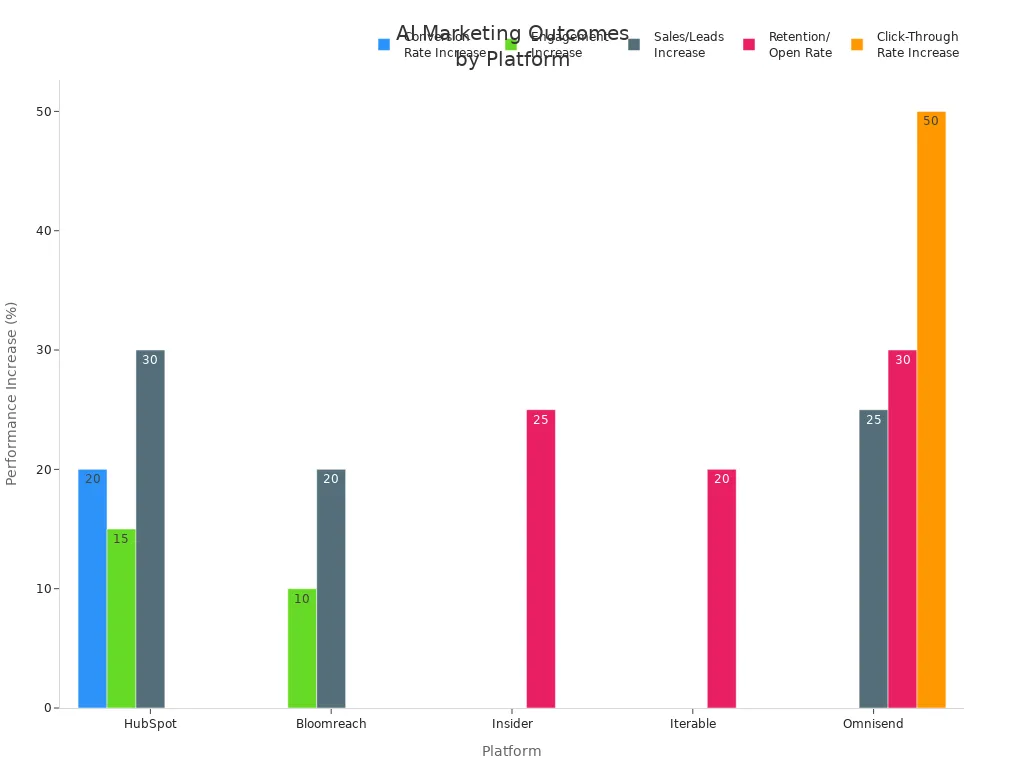
Automation and Personalization
Sobot and other platforms use ai-powered personalization and automation to transform customer engagement. Sobot’s chatbot automates repetitive tasks, provides 24/7 support, and delivers personalized communication based on customer data. Zendesk and Nice also offer ai-driven personalization, using sentiment analysis and predictive analytics to tailor responses. These features create personalized experiences, boost customer satisfaction, and improve net promoter scores. Automation saves time and powers 95% of customer interactions, while hybrid models combine AI with human agents for empathy and efficiency.
- Sobot’s ai tools for omnichannel marketing automate workflows and personalize every interaction.
- Customers enjoy self-service options and instant support, leading to higher loyalty and conversion rates.
- Emotional intelligence tools measure engagement and ensure personalized experiences at scale.
Analytics and Reporting
Sobot provides real-time analytics and reporting to help businesses understand customer behavior and service quality. The unified dashboard tracks key metrics like answering speed, queue time, and talk time. Sentiment analysis identifies urgent cases and helps prioritize responses. Managers use these insights to optimize support processes and improve personalized customer engagement.
- Sobot’s analytics tools deliver ai-driven insights into customer satisfaction and agent performance.
- Rapid report generation and trend forecasting support data-driven decisions.
- Businesses see a 48% increase in efficiency and a 54% improvement in first-contact resolution.
Integrations and Scalability
Sobot’s omnichannel platform supports seamless integration with Salesforce, Shopify, and other major systems. This flexibility allows businesses to scale by adding users, channels, and regions. Sobot’s ai tools for omnichannel marketing ensure seamless integration with legacy systems through APIs and middleware. The platform’s unified workspace enables agents to manage all interactions efficiently, supporting growth and expansion.
MoEngage, Braze, Zendesk, and Intercom also offer integration options, but Sobot stands out with its native integration capabilities and scalable architecture. The Opay case shows how Sobot unified customer service across channels, integrated WhatsApp for marketing, and achieved a 90% satisfaction rate. Sobot’s approach delivers seamless customer experiences and supports business growth.
Omnichannel Communication Platform Value
Pricing Models
Businesses evaluating an omnichannel communication platform often compare pricing models to determine long-term value. The most common models include subscription-based, pay-per-transaction, GMV percentage-based, uniform omnichannel pricing, channel-specific pricing, and combination pricing. The table below summarizes these options:
| Pricing Model | Key Features and Examples | Value for Customer Engagement and Business Impact |
|---|---|---|
| Subscription-based | Per user or agent; tiered monthly fees | Predictable costs, scalability, supports budget planning, fosters long-term relationships |
| Pay-per-transaction | Charges by usage volume | Flexibility for variable interaction volumes, cost control, efficient engagement |
| GMV Percentage-based | Tied to Gross Merchandise Value | Aligns costs with sales performance, incentivizes platforms to support growth and satisfaction |
| Uniform Omnichannel Pricing | Same price across all channels | Transparent, consistent pricing, builds trust and loyalty, enhances retention |
| Channel-specific Pricing | Different prices per channel | Margin optimization, may reduce price consistency and impact trust |
| Combination Pricing | Uniform with selective discounts/promotions | Encourages repeat purchases, balances value and flexibility |
Transparent and uniform pricing, such as that offered by Sobot’s omnichannel communication platform, builds trust and loyalty. Consistent pricing across channels simplifies budget planning and supports strong customer relationships. Platforms that combine omnichannel support with AI-driven automation and analytics deliver faster, more personalized service, increasing satisfaction and operational efficiency.
Security and Compliance
Security remains a top priority for any omnichannel communication platform. Sobot’s platform complies with country-specific regulations and holds internationally recognized certifications for information, cloud, and system security. The company operates regional data centers in the United States, Europe, Singapore, and other locations. This approach ensures global data privacy, reliable performance, and compliance wherever businesses operate. Security forms the foundation of Sobot’s design, aligning with strict local and global standards. Customers benefit from robust protection and peace of mind when using an omnichannel contact center.
Security and compliance drive trust, making the omnichannel communication platform a reliable choice for businesses seeking to protect customer data.
Scalability for Growth
Scalability defines the success of an omnichannel communication platform as businesses grow. Leading platforms integrate seamlessly with CRMs, helpdesks, social channels, apps, and voice systems. AI-driven automation handles routine tasks, reducing errors and freeing agents for high-value activities. Real-time data integration creates unified customer profiles, enabling personalized interactions at scale. Cloud-based and modular architectures offer flexibility for businesses of all sizes. Continuous monitoring and optimization by AI agents support sustainable growth and adaptability.
- The platform consolidates fragmented tech stacks, streamlining processes and boosting productivity.
- Supports omnichannel messaging across email, SMS, WhatsApp, push, and in-app notifications.
- Real-time segmentation enables precise targeting using demographics and behavior.
- Journey orchestration automates multi-step, cross-channel customer journeys.
- Ethical AI practices ensure data privacy and security, supporting sustainable expansion.
An omnichannel contact center must adapt quickly to changing business needs. Sobot’s omnichannel communication platform delivers the scalability, integration, and automation required for rapid growth and long-term success.
Real-World Engagement Results
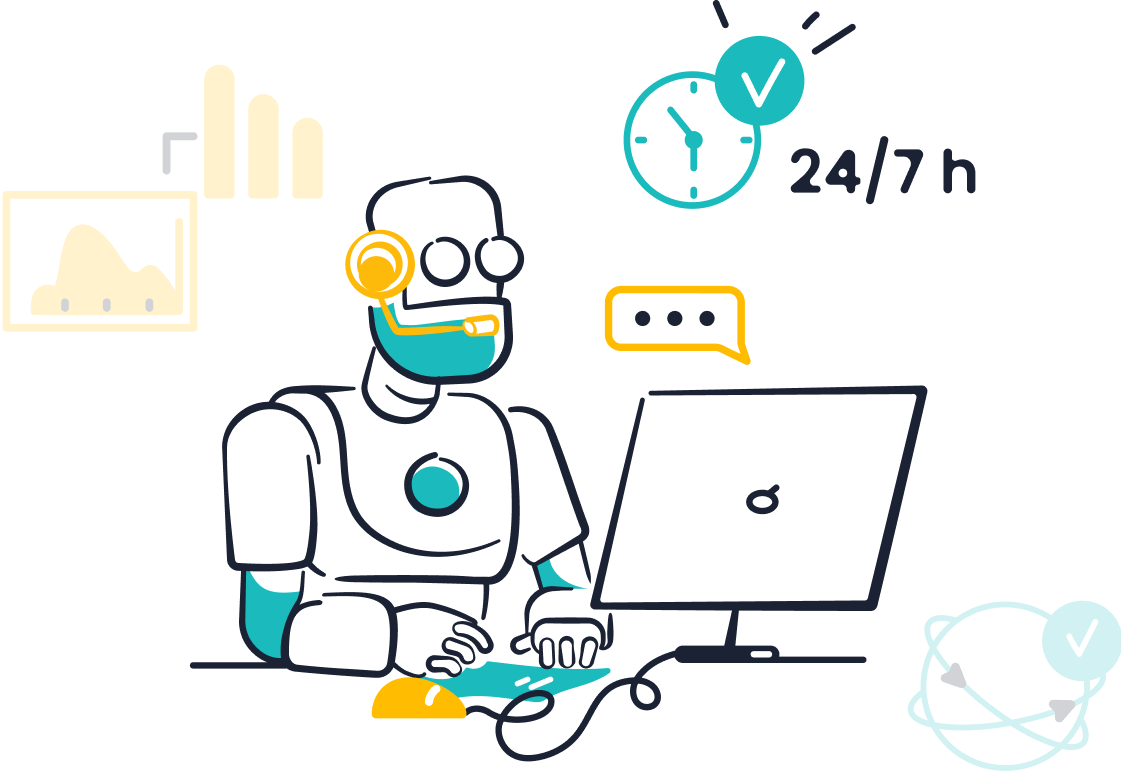
Sobot Case: Opay
Opay, a leading financial service platform, faced challenges managing high volumes of customer interactions across multiple channels. After adopting Sobot’s omnichannel AI chatbot, Opay transformed its engagement strategy. The company unified social media, email, and voice communications, streamlining support and marketing outreach. As a result, Opay saw customer satisfaction soar from 60% to 90%. Operational costs dropped by 20%, demonstrating the efficiency of Sobot’s AI-powered personalization and automation. Opay’s conversion rates increased by 17%, and the WhatsApp Business integration achieved an 85% message reading rate. These results highlight how Sobot’s platform delivers personalized experiences and measurable business value.
Sobot’s AI-driven solution enabled Opay to provide 24/7 support, reduce agent workload, and deliver consistent, personalized experiences across every channel.
The impact of omnichannel AI solutions extends beyond Opay. Businesses report significant improvements in engagement metrics after implementation:
| Metric | Before Implementation | After Implementation | Improvement (%) |
|---|---|---|---|
| Customer Engagement Rate | Baseline | Increased by 40% | 40% |
| Customer Retention Rate | 60% | 85% | 25% |
| Sales Growth | 10% | 40% | 30% |
| Conversion Rate | Baseline | Increased by 20% | 20% |
| Average Order Value | Baseline | Increased by 15% | 15% |
| Customer Satisfaction | Baseline | Improved by 18% | 18% |
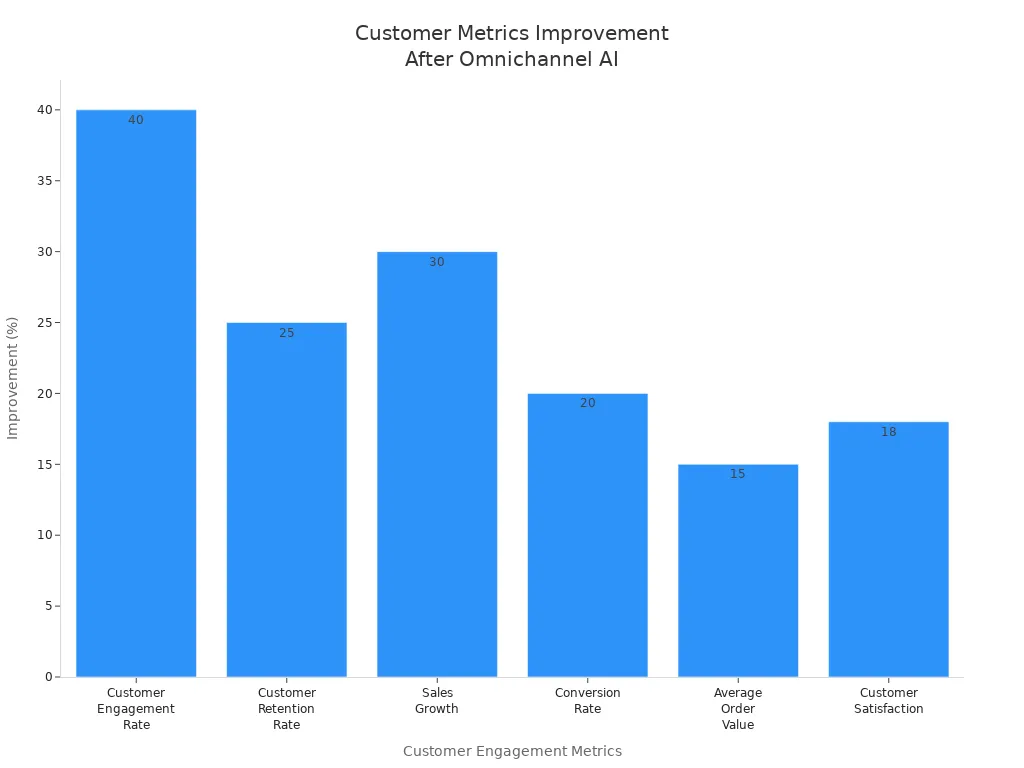
User Feedback and Reviews
Users consistently praise Sobot for its intuitive interface, robust AI-powered personalization, and seamless omnichannel integration. Many customers highlight the platform’s ability to automate routine tasks, allowing agents to focus on complex issues. Sobot’s multilingual chatbot and unified workspace receive positive feedback for improving both agent productivity and customer satisfaction. Industry analysts recognize Sobot as a leader in delivering personalized experiences at scale, noting its strong analytics and reporting features.
Businesses across industries report substantial cost savings after adopting omnichannel AI platforms. For example, e-commerce companies achieve up to a 40% reduction in customer service expenses, while telecommunications firms see a 30% drop in call center costs. Sobot’s clients, such as OPPO, have achieved an 83% chatbot resolution rate and a 57% increase in repurchase rate. Companies using AI-powered personalization and omnichannel engagement strategies report an average 89% customer retention rate and a 287% increase in purchase rates compared to single-channel campaigns.
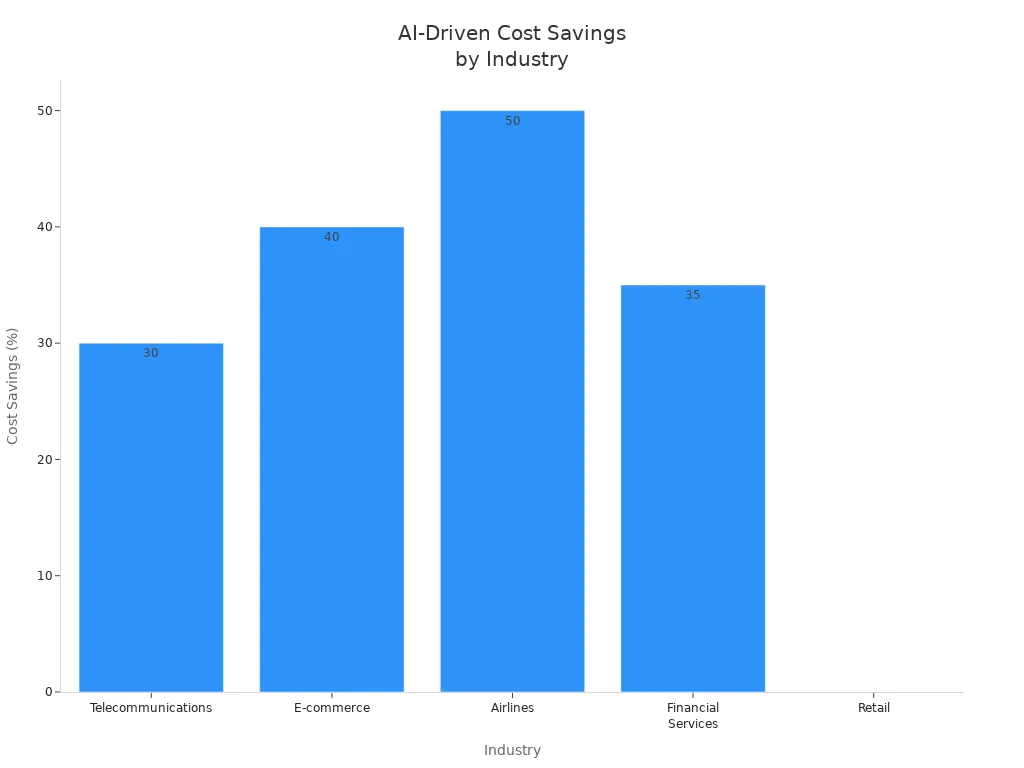
Sobot’s commitment to AI-powered personalization and personalized experiences continues to set new standards for customer engagement and operational excellence.
Choosing the Right Platform
Selection Checklist
Selecting the right sales engagement platforms requires a clear process. Businesses should follow these steps to ensure the best fit for their needs:
- Map the entire customer journey across all touchpoints. This helps teams understand where customers interact and what they expect.
- Gather data through surveys, interviews, and social media analytics. These insights reveal customer behaviors and preferences.
- Identify transition points where customers switch channels. Seamless experiences keep engagement high.
- Analyze pain points and opportunities in the customer journey. Addressing these areas improves overall engagement.
- Use AI to predict customer behavior and personalize every interaction.
- Automate routine tasks to improve response times and free up agents for complex issues.
- Tailor interactions for high-value customers to maximize satisfaction.
- Ensure the platform supports real-time engagement and multiple channels.
- Evaluate scalability, integration capabilities, and cost.
- Prioritize data privacy, ethical AI use, and security.
According to industry research, companies that follow these steps see higher retention rates and stronger engagement.
Matching Needs to Solutions
Every business has unique engagement goals. Matching needs to the right sales engagement platforms involves several key actions:
- Assess business goals and ensure platform features align with objectives like improving engagement or retention.
- Understand where customers are most active and select tools that support those channels.
- Evaluate integration with existing systems such as CRM or marketing automation for smooth operation.
- Consider scalability and flexibility to adapt as the business grows.
- Use a comparison framework that includes features, pricing, case studies, and expert reviews.
- Audit customer touchpoints to find areas for improvement and personalize engagement.
- Pilot new solutions on selected channels before a full rollout.
- Invest in training and change management to help teams use new tools effectively.
Sales engagement platforms that offer clear customer views, smart automation, and easy integration often deliver the best results.
Common Pitfalls
Businesses sometimes make mistakes when choosing sales engagement platforms. Avoid these common pitfalls:
- Inconsistent messaging across channels can confuse customers and weaken brand identity.
- Poor integration between channels leads to fragmented customer journeys.
- Ignoring data-driven decision-making prevents teams from optimizing engagement.
- Lack of mobile optimization risks losing customers who use smartphones.
- Assuming AI agents that sound fluent are always reliable. Accuracy and context matter.
- Underestimating the complexity of serving customers in multiple locations.
- Treating voice and text as separate experiences creates disconnected journeys.
- Believing all customizations require developers. Look for platforms with user-friendly customization options.
- Overlooking real-world conditions like noise can reduce AI performance.
- Ignoring the need for ongoing AI training and updates can hurt long-term engagement.
Tip: Choose sales engagement platforms that unify all channels, support easy customization, and provide strong analytics for continuous improvement.
Sales engagement platforms drive engagement by unifying channels and personalizing every interaction. Recent industry reports show platforms like Braze, Iterable, and SuperAGI deliver strong engagement gains, with up to 30% higher engagement and 25% fewer support queries. For small businesses, mapping customer journeys and using automation tools helps optimize engagement. Medium and large companies benefit from scalable sales engagement platforms with advanced analytics and orchestration. Aligning platform choice with engagement goals supports long-term growth and a unified workforce. Use the checklist to select sales engagement platforms that fit your needs and future vision.
FAQ
What is an omnichannel AI platform?
An omnichannel AI platform connects all customer communication channels, such as chat, email, voice, and social media, into one system. This platform uses artificial intelligence to automate responses and personalize customer engagement, making every interaction seamless and efficient.
How does omnichannel AI improve customer engagement?
Omnichannel AI analyzes customer data and behavior. It delivers personalized messages and automates routine tasks. Customers receive faster, more relevant support. Businesses see higher satisfaction and loyalty. This approach helps companies build stronger relationships and increase engagement across all channels.
Why should businesses choose an omnichannel communication platform?
An omnichannel communication platform ensures customers can reach support through their preferred channels. It unifies data and interactions, making service consistent and efficient. Companies benefit from improved customer engagement, reduced costs, and better insights for decision-making.
Can Sobot’s omnichannel AI solution scale with business growth?
Sobot’s omnichannel AI solution supports businesses of all sizes. It integrates with major systems and adds new channels easily. As companies grow, the platform adapts, ensuring consistent customer engagement and reliable performance.
What security measures do omnichannel AI platforms provide?
Omnichannel AI platforms, like Sobot, use advanced security protocols. They comply with global data privacy standards. Regional data centers protect customer information. These measures ensure safe, trustworthy customer engagement across every channel.
For more details about Sobot’s omnichannel AI solutions, visit Sobot’s official website.
See Also
Comprehensive Overview Of Omnichannel Call Center Platforms
Step-By-Step Process For Deploying Omnichannel Contact Centers
Evaluating Artificial Intelligence Solutions For Enterprise Call Centers
